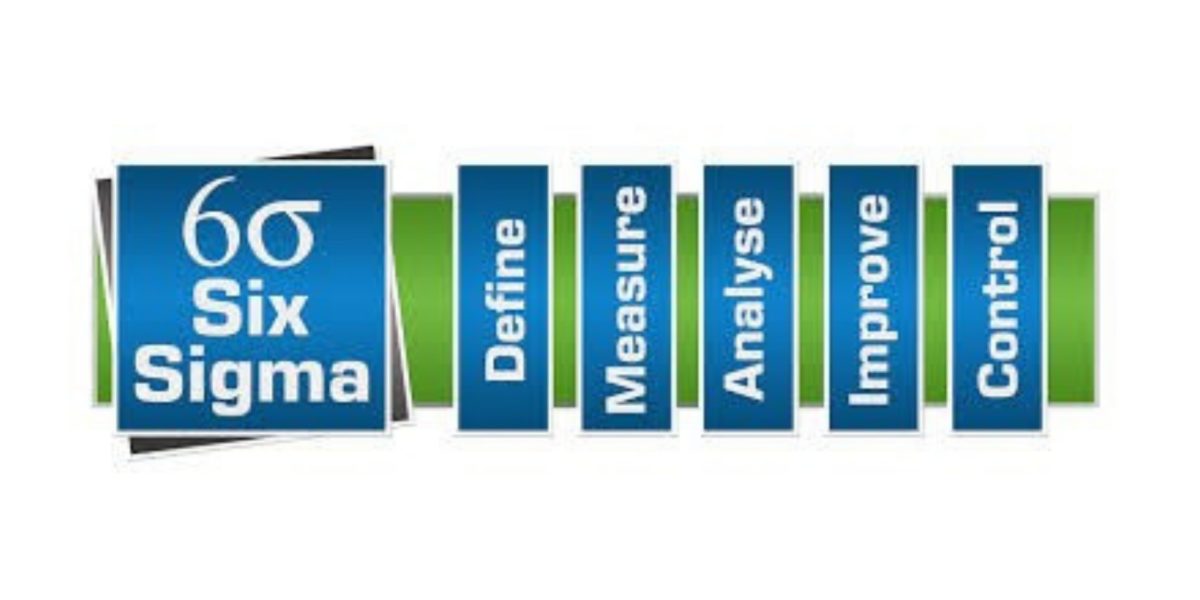- Approved by AICTE & Affiliated to the University of Mumbai | Accredited With B++ Grade by NAAC | Choice Code : 311310210
Six Sigma (6σ) helps accuracy in business processes

Article published in Financial Express
dated 04/02/2019
Eleven Million Checks: few years back, one ad of Bank of America on TV typified Six Sigma belief. The slogan in the ad was “We don’t process eleven million checks a day. We process one check just right, and then do it eleven million times.” The process is charted out just once, but it is so accurately modeled and is reproduced to achieve highest success rate. This tagline personifies Six Sigma. How high is this success rate? It is less than 3.4 errors per million opportunities for error….this is Six Sigma which is quality management term. Six Sigma (6σ) is a set of techniques and tools for process improvement. A six sigma process is a statistical tool in which 99.99966% perfection is achieved.
It was introduced by engineer Bill Smith while working at Motorola in 1980. The term Six Sigma got registered because it was written that way when registered as a Motorola trademark on December 28, 1993. It was originated from terminology associated with statistical modeling of manufacturing processes. The maturity of a manufacturing process can be described by a sigma rating indicating its yield or the percentage of defect-free products it creates—specifically, within how many standard deviations of a normal distribution the fraction of defect-free outcomes corresponds to. Motorola set a goal of “six sigma” for all of its manufacturing.
Bill Smith generated billions of dollars for Motorola; he introduced his statistical approach aimed at increasing profitability by reducing defects. Smith, in later part of his life earned the title as ‘’Father of Six Sigma.’’ Today it has become a mainstream operation term in business world. As a fact of life the creator rarely gets rewarded for his creativity, as a Motorola employee, Smith did not share directly in the profits generated by the company’s Six Sigma applications. However, over the years, he and Motorola garnered numerous awards and recognition for his vital work to improve profitability in American manufacturing sector. Smith was proud of his role in Motorola’s winning the prestigious Malcolm Baldrige National Quality Award which is given for the best practices in quality management in U.S. The Baldrige Award came in 1988, two years after Motorola implemented Smith’s Six Sigma principles.
In 1995, Jack Welch included Six Sigma fundamentally in all his business strategies at General Electric (GE). He decided to give a thorough overhaul to General Electric; he was guided by engineers and consultants, and he realized that something needed to be done to reduce the operational defects throughout the company. Do you know that Jack Welch’s appointment came with the mandate to change the company for the better; the GE board told him that in whatever way necessary, Welch had to bring the changes? That’s where Six Sigma was brought into the processes at GE. Over the course of five years of Six Sigma implementation, GE reported savings of $12 billion. That is a gigantic improvement, isn’t it? Welch became a promoter of Six Sigma and championed its use in not just his own company, but in others around the world, even in small businesses.
What are the strengths of Six Sigma? It addresses quality problems; errors and defects and costing in terms of waste and delays. It helps in diagnosing and solving problems for getting solutions to problems with its dozens of tools. Once the diagnosis is complete, the right tool can be chosen for a rapid solution. It develops key metrics that first define the problem, then measure the defects and give desired and actual results. It can benchmark the methods at the backdrop of industry’s best practices. With an appropriate investment, a company that adopts Six Sigma can be a center of excellence developing its own best practices through continuous improvement. Another feature of Six Sigma is that it works well with other cutting-edge management tools, such as continuous improvement (kaizen), lean manufacturing, and agile development.
Features that set Six Sigma apart from previous quality-improvement initiatives include: a clear focus on achieving measurable and quantifiable financial returns from any Six Sigma project, an increased emphasis on strong and passionate management leadership and support, a clear commitment to making decisions on the basis of verifiable data and statistical methods, rather than assumptions and guesswork.
In recent years, some practitioners have combined Six Sigma ideas with lean manufacturing to create a methodology named as Lean Six Sigma. The Lean Six Sigma methodology views lean manufacturing, which addresses process flow and waste issues, and Six Sigma, with its focus on variation and design, as complementary disciplines aims at promoting business and operational excellence. Companies such as GE, Accenture, Verizon, GENPACT, 3M Corporation, Xerox, Allied, Conseco, Tata Steel and IBM use Lean Six Sigma to focus transformation efforts not just on efficiency but also on growth. It serves as a foundation for innovation throughout the organization, from manufacturing and software development to sales and service delivery functions. The International Organization for Standardization (ISO) has published in 2011 the first standard “ISO 13053-1:2011” defining a Six Sigma process. Other “standards” are created mostly by universities or companies that have so-called first-party certification programs for Six Sigma.
Implementation of Six Sigma ensures accuracy to specification. 6 Sigma takes care of 99.73% of the process deviation. Organizations cannot afford to set a very loose specification, and, also, they cannot chip away the high assurance point as set in Six Sigma Model.
This means that Six Sigma itself is pretty difficult to achieve, therefore 7 Sigma and above is beyond belief.

